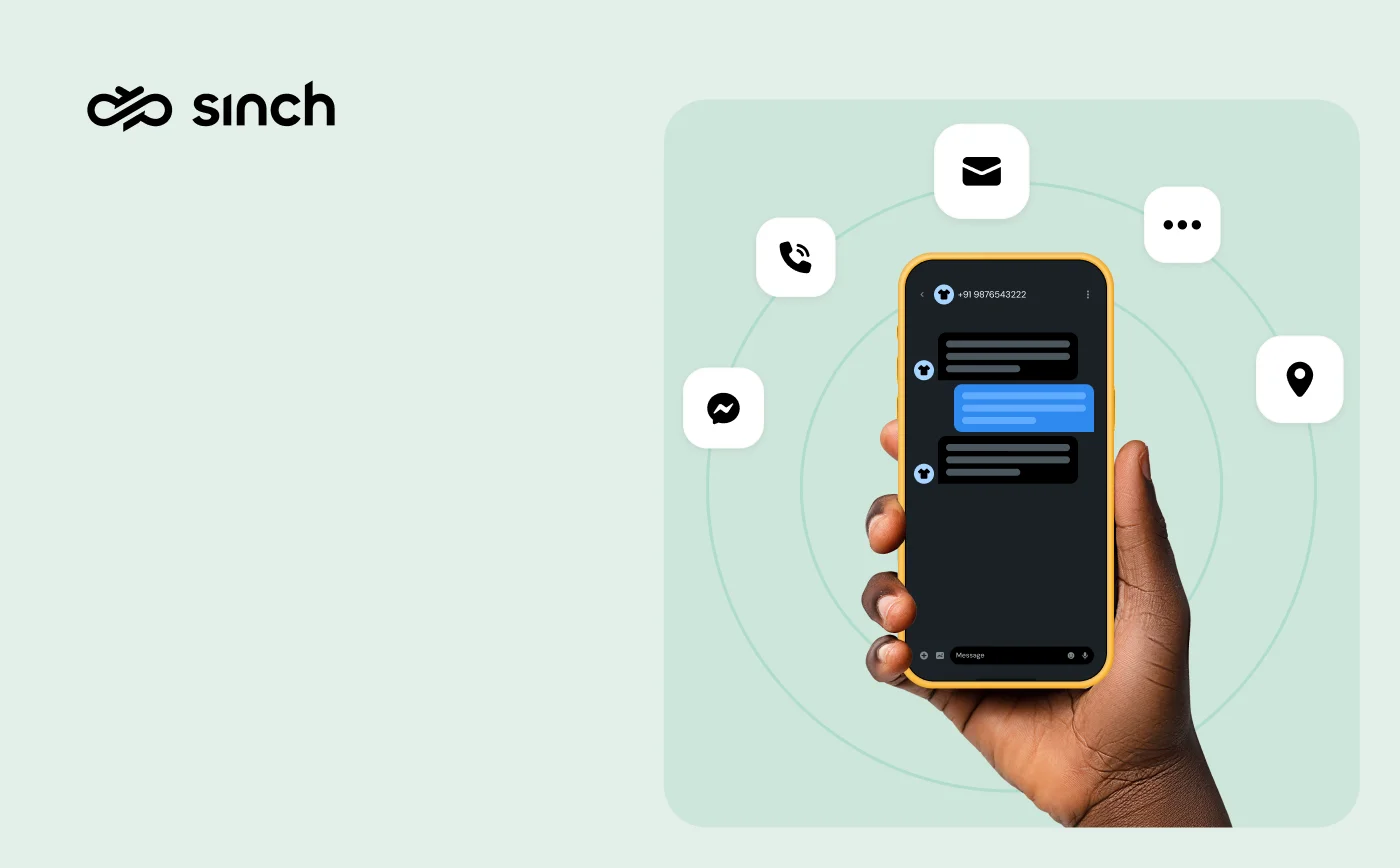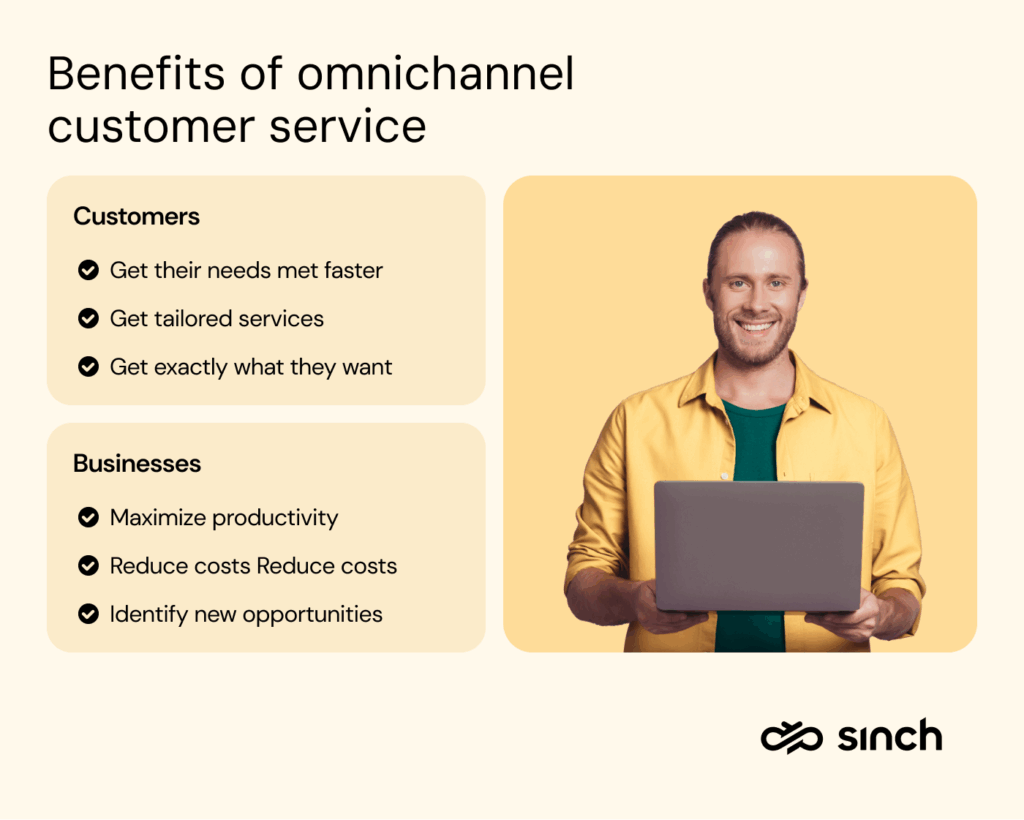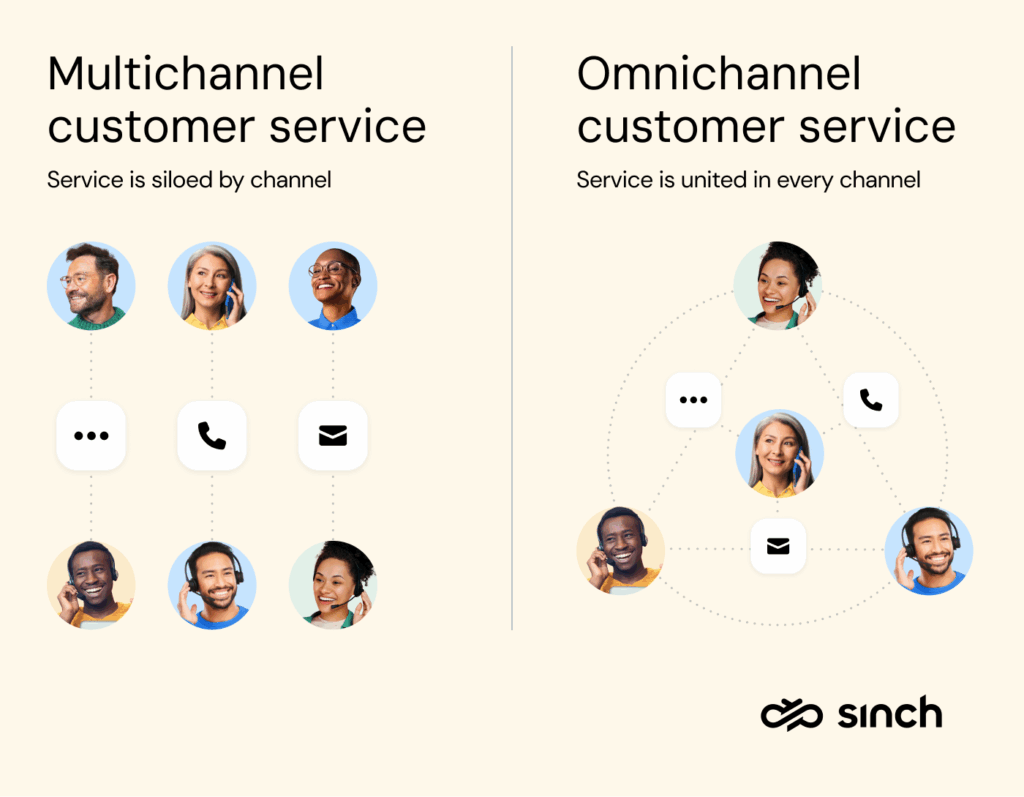Insights
How to build an omnichannel customer service strategy that actually works

Insights

Most brands want to deliver great omnichannel customer service.
But the reality? Disjointed systems, inconsistent experiences, and back-end complexity get in the way.
That disconnect shows. Customers have to repeat themselves, switch channels mid-conversation, or start from scratch with every new agent.
In this guide, we’ll clarify what omnichannel customer service really means and why many brands are still missing the mark. Backed by fresh insights from our 2025State of customer communications survey of over 2,800 global consumers, we’ll highlight where things go wrong and what today’s consumers expect instead.
Most importantly, we’ll share practical, proven tactics to help you build an omnichannel strategy that actually works – one that reduces friction, preserves context, and keeps your customers coming back.
Omnichannel customer service provides support across multiple communication channels in a connected, consistent way, creating seamless workflows that maintain full context and conversation history across touchpoints.
Unlike traditional multichannel setups where each channel – like social media, email, text messages, RCS, and even WhatsApp – operates in isolation, an omnichannel approach creates a smooth experience by maintaining full context and conversation history across touchpoints.
Here’s what this looks like in practice:
A customer texts a rental car company about a breakdown. The company replies in real time, then calls to gather more details and coordinate roadside assistance. Later, they send SMS updates about the tow truck’s arrival.
Throughout, agents see the entire conversation history, so the customer never has to repeat themselves. The issue is resolved quickly, leaving the customer satisfied and more likely to trust the brand in the future.
This approach matches how people want to communicate. Our State of customer communications survey found that 36% of consumers want to receive updates on more than one channel, and 58% want to choose their preferred channel when opting in.
Omnichannel service meets customers where they are, when they need help, without forcing them into any single communication silo.
An omnichannel customer service strategy helps you build customer trust, increase loyalty, and reduce support costs – all of which directly impact revenue and reduce churn.
A consistent experience sets you apart from the competition by showing shoppers that you’re organized, attentive, and easy to engage with.
On the operational side, consolidating different channels and customer data into one system increases agent productivity. Customer service teams spend less time toggling between apps and more time resolving issues, reducing costs and improving ROI.
Omnichannel also improves response times through AI-powered automation and conversational AI that handles routine questions, freeing support agents to focus on complex, high-value cases.
Finally, the ability to easily add new digital channels means you can quickly adapt to changing customer expectations and support transitions between methods.

You might be asking yourself, “Isn’t omnichannel just a fancy word for multiple communication mediums?”
Not exactly.
There’s omnichannel and then there’s multichannel customer service. They’re similar but different concepts that provide your customers with unique experiences.
Here’s a summary of the differences between omnichannel vs. multichannel:
| Feature | Multichannel support | Omnichannel support |
|---|---|---|
| Number of channels | Multiple | Multiple |
| Channel integration | No; channels operate separately | Yes; channels are fully connected |
| Context sharing across channels | Not usually available | Seamless transfer of conversation history |
| Customer experience | Fragmented | Consistent and personalized |
| Agent efficiency | Lower; agents lack full context | Higher; agents work with complete context |
| Flexibility for customers | Limited; must stick to one channel | High; can switch channels without losing continuity |
In essence, an omnichannel customer support experience combines all channels for quick issue resolution, while a multichannel support strategy allows customers to reach out and contact you on separate channels.

Many brands claim to offer omnichannel customer service, but the reality often falls short. While they might be present on multiple channels, the connections between those channels are weak or nonexistent. And that means that customers are switching from chatbots to phone trees and end up repeating themselves each time, adding to frustration and pushing them towards brands that make things easier.
According to the 2025 State of customer communications report, only 55% of organizations say their communications are fully integrated with their tech stack. Another 38% admit their channels are only partially integrated, a clear sign that omnichannel service is still out of reach for many.
These silos don’t only affect the customer experience. Contact center teams feel it too. Without a unified view, they’re stuck jumping between tools and screens, trying to piece together customer information and what’s already been said. That means slower resolutions, inconsistent messaging, and support that feels anything but seamless.
The impact can mean unhappy customers, reduced customer loyalty, burned-out teams, and rising operational costs.
Fixing this starts with an omnichannel strategy that unifies channels and data in a single view, so agents can deliver omnichannel personalization at every touchpoint. Instead of adding more ways to connect, you optimize each one to work together and create a consistent, high-quality experience that brings customers back.
Real omnichannel service eliminates the 80% negative reaction customers have to repeating information. Instead of explaining what omnichannel is again, let’s see what sets connected service apart:
As a result, customers enjoy a better experience with a brand that knows them, remembers their preferences, and solves their problems.
Nissan, one of the world’s largest car manufacturers, needed a new way to keep customers engaged during the long stretch between car purchases – often five to seven years.
To close this gap, Nissan Europe introduced a mobile-first omnichannel strategy with Sinch, becoming the first automotive brand in Europe to test Rich SMS alongside mobile app notifications.
Nissan shared personalized messages on maintenance, weather tips, and local dealership offers, creating timely touchpoints tailored to each customer’s needs and interests.
“Depending on a customer’s preferred channel, who they are, and when they come back to the market, we try to strategically deliver relevant messaging based on their maintenance needs or even based on the weather forecast.”
This proactive, connected approach paid off: Nissan quadrupled customer engagement and achieved an 80% conversion rate on new campaigns by using customer feedback and social media insights as part of their integrated marketing communications mix.
Building omnichannel customer service can feel overwhelming because most guides focus on flawless integration instead of realistic, step-by-step progress.
In reality, you’re dealing with legacy systems, limited budgets, and teams that still need to keep customers happy as you improve. The key is to build gradually and focus on practical wins that create immediate value while setting the foundation for a fully connected experience.
Start with these steps:
Look at every touchpoint from initial awareness through post-purchase support and identify where friction currently exists, whether in e-commerce, in-store, or in-person interactions. Evaluate pain points at different parts of the customer journey like cart abandonment, repeated questions, or long resolution times.
Are customers bouncing between channels because they can’t find what they need? Do they abandon conversations when switching from chat to phone? Understanding these challenges helps you prioritize which connections to build first. Focus on high-impact scenarios where seamless handoffs make the biggest difference.
For example, a customer trying to return a high-value item needs context continuity far more than someone checking a simple FAQ in your knowledge base or using self-service options. Use data from your current channels to map the most common paths and highlight points where context gets lost.
This journey-first approach ensures you’re solving real customer problems and not just integrating channels for the sake of it.
Automation efficiently resolves routine questions, but complex issues still require human expertise. Design your AI chatbots and automated systems to recognize when a situation needs an agent and escalate the ticket accordingly. For example, a customer asking about store hours can get an instant automated reply, while a billing dispute should immediately route to a human.
When a conversation transitions to an agent, all context should transfer automatically. The agent should see the full chat history, understand what the bot already tried, and know the customer’s current concerns.
Avoid forcing customers to repeat themselves after hearing “I’ll transfer you to someone who can help.” Instead, set up systems so agents can continue smoothly with, “I see you’ve been discussing a billing issue – let me take it from here.”
Security drives customer confidence, especially in industries like financial services and healthcare where data breaches can end customer relationships instantly. When customers share sensitive information across multiple channels, they need to know that their data stays protected at every touchpoint. One security gap can undo years of trust.
According to our survey, 44% of businesses identify security and privacy as a top challenge. FinServ and healthcare organizations also face strict regulatory requirements that raise the stakes even higher.
Customers expect verified sender identities, encrypted communications, and secure authentication. Implementing strong measures like end-to-end encryption and verified business messaging not only protects data but also positions your brand as a trusted, professional partner.
Don’t just focus on internal efficiency – look closely at how your strategy impacts the user experience. Metrics like customer satisfaction scores, first-contact resolution rates, and average resolution times across channels reveal whether service is actually getting better from the customer’s perspective.
Watch for signs of friction, such as customers switching channels multiple times to solve the same issue. At the same time, track agent productivity: are agents spending less time searching for information and more time resolving problems?
Check how often customers have to repeat themselves when moving between channels to assess whether context is truly preserved. Setting up alerts for stalled transitions helps you spot integration gaps early. Together, these insights create a feedback loop that keeps your strategy grounded in real customer behavior and evolving where it matters most.
Providing an omnichannel customer experience doesn’t mean adding more channels. It means connecting the right ones so customers get help without friction or repetition. When done well, you’ll see it reflected in higher satisfaction, faster resolutions, and stronger team performance.
Curious how leading brands are making it work – and where opportunities still exist?
Read the full 2025 State of customer communications report for insights and practical strategies.